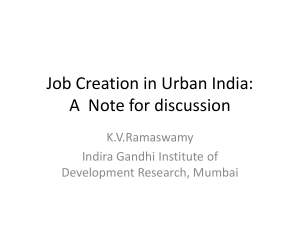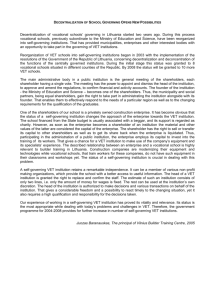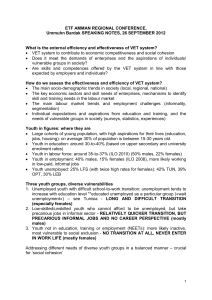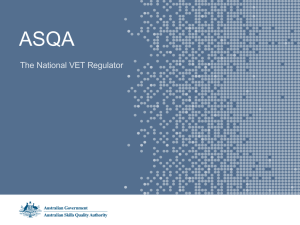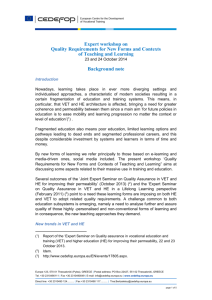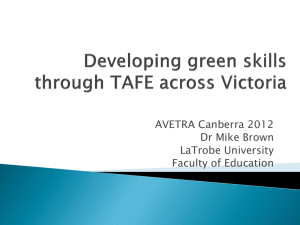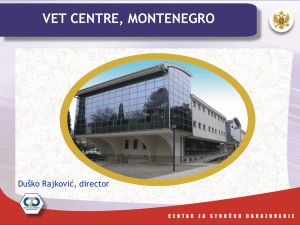The Accreditation Process in Vocational Education and
advertisement
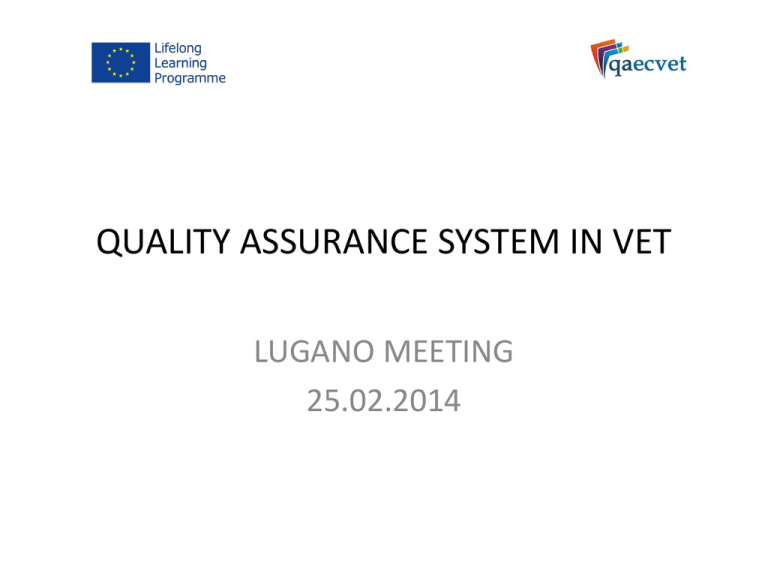
QUALITY ASSURANCE SYSTEM IN VET LUGANO MEETING 25.02.2014 The Accreditation Process in Vocational Education and Training The tasks of the VET provider and the tasks of the body recognised to accredit VET organisations or VET programmes are described step by step. • As one of its first tasks, the accreditation body has to elaborate the criteria and standards which have to be met by the VET provider to achieve positive external assessment. • After the VET provider has submitted an application for accreditation to the relevant body, an external evaluation follows. • If the result of the evaluation is negative, accreditation will be denied and the VET provider will have to prepare and apply again after having improved The Accreditation Process in Vocational Education and Training • The decision of the evaluating body will normally include advice and recommendations on necessary changes • Following a positive evaluation and proposal for accreditation, the VET provider will be awarded its accreditation and the organisation or the VET programme in question will receive a quality certificate. This certificate can be used for marketing activities of the VET provider to potential customers. • A quality certificate is never issued for an unlimited period of time. • TURKAK, started to provide accrediation services in 2001 and became a signatory of MLA with EA for all the available accreditation schemes at 2008. Currently TURKAK is a full member of EA, IAF and ILAC. SELF ASSESMENT IN VOCATIONAL EDUCATION • To maintain the focus on the agreed areas for improvement, it is necessary to monitor and supervise the relevant tasks while carrying out daily work routines. Five issues should be considered in the process of determining whether selfassessment is the appropriate method for developing a VET institution: • mission, vision and values • commitment • autonomy • dialogue • evidence VOCATIONAL SCHOOL SELF-ASSESSMENT • Any process or methodology carried out by a VET provider under its own responsibility, to evaluate its performance or position in relation to two dimensions: an internal dimension (“micro level”) that covers services, internal staff, beneficiaries or clients, policy and/or internal organisation, development plan, etc.; and an external dimension (“macro level”) that covers analysis of the educational offer of this institution compared to others: relationship with the territorial system of actors (local decision-makers, unions, local governments, type of labour market and needs of VET, information network, type of populations interested in a learning offer and evolution of the needs, main results of work at national and European levels in the VET sector).’ The Common Quality Assurance Framework (CQAF) in vocational education and training • The CQAF model can be applied as a quality management framework for the national VET system and individual VET providers (see Appendices 1 & 2). Involvement of stakeholders is of the utmost importance when aiming to improve the quality of systems and operations. The phases of quality assurance used in the model are shown in Figure 1 below. • The elements of the model are planning, implementation, evaluation and assessment and review (feedback and procedures for change), each of which is assigned a set of quality criteria. Different Member States have made different choices for dealing with quality assurance and improvement in vocational education and training. This is why the model presents the core quality criteria such that they can be applied to different operating environments. The model uses questions to draw attention to critical factors of quality. THANKS FOR YOUR LISTENING!
